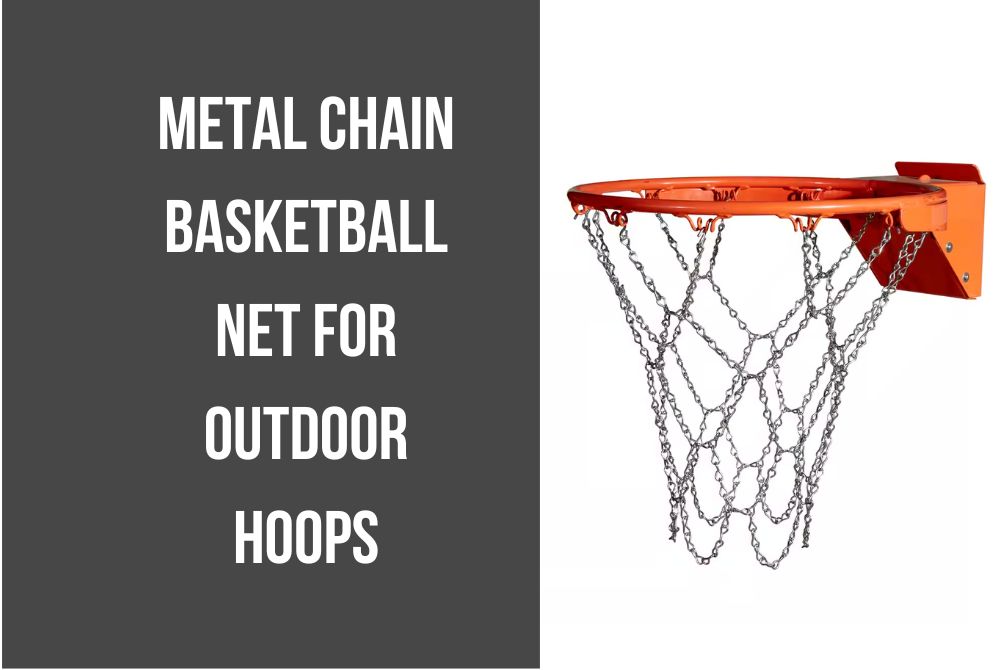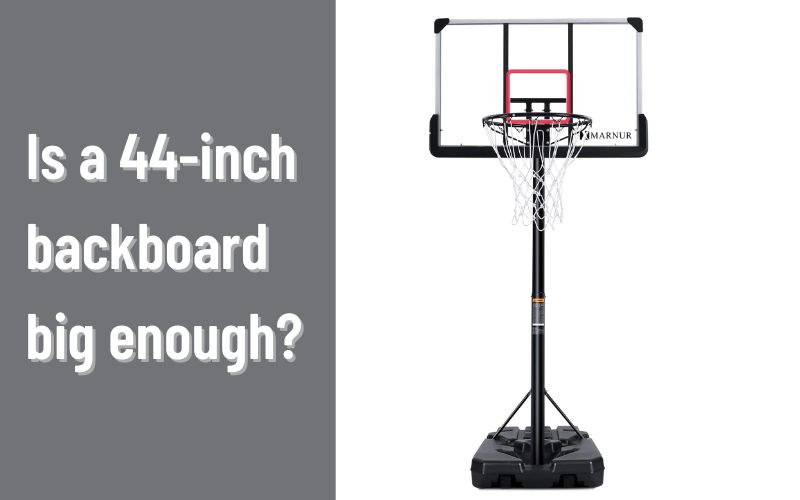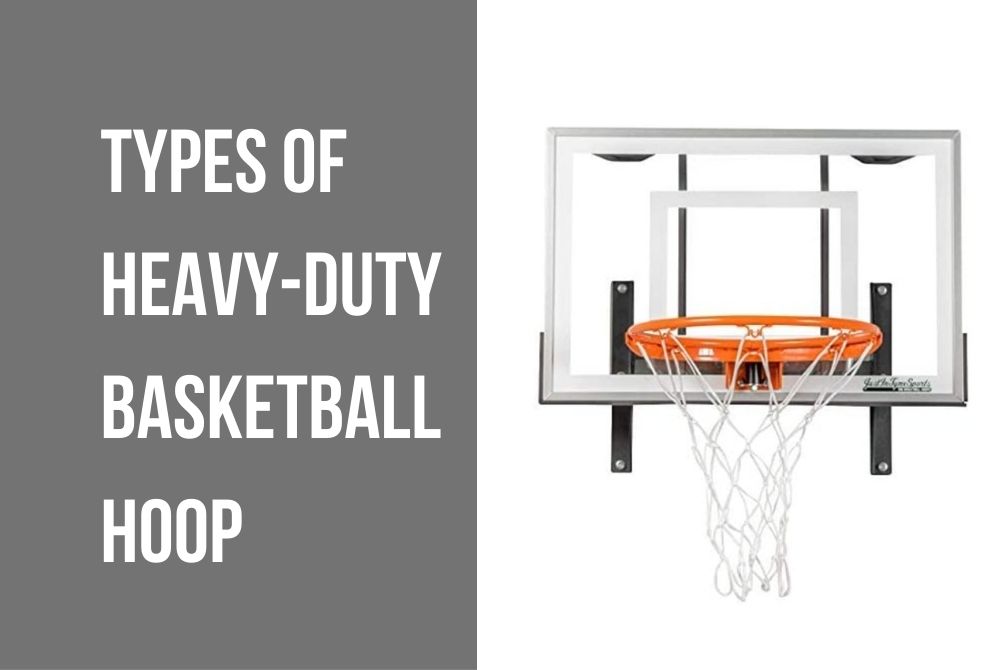Youth basketball courts differ from adult basketball courts. The court must be smaller in size, but certain rules and standards need to be followed so that it is effective.
There will be a discussion of topics such as how is a youth basketball court different from an adult basketball court? And what size should be used for youth basketball courts?
Is it possible to determine the precise dimensions of each component of the youth basketball court? By using basic youth game rules and standards, how can you determine the size of your court?
The final step is how to DIY your own youth basketball court with simple steps and precautions to observe.
How is the youth basketball court different from the adult basketball court?
There are several critical differences between youth and adult basketball courts. There is a significant difference in the size of a youth court compared to an adult court. The reason for this is that children have a shorter vertical reach and need to run over shorter distances.
The second difference is that the height of the hoop varies from youth to adult courts. The hoops in youth games are smaller than the hoops in adult games, making it easier for smaller players to shoot.
What Size of A Youth Basketball Court Should You Use?
There are guidelines set out by the National Federation of State High School Associations (NFHS) regarding how big a court and what size basketball should be used in high school leagues. We will discuss full court dimensions, half court dimensions, and international court dimensions.
Full Court Dimensions
The youth courts measure 42 feet wide and 74 feet long, while the high school courts measure 50 feet wide and 84 feet long.

Half Court Dimensions
The half-court in the high school measures 42 feet by 50 feet, while the half-court in the middle school measures 37 feet x 42 feet.
International Court Dimensions
In international competitions, full courts measure 104.9 feet x 62.3 feet, while half courts measure 52 feet x 31 feet.
Are the High School Basketball Court And College Basketball Court the Same Size?
No, the basketball court in high school and the basketball court in college are different. It is worth noting that the high school court is 10 feet shorter than its counterpart, measuring only 84 feet, while its width remains unchanged at 50 feet.
Moreover, high school courts measure 19 feet on the free-throw line and 9 inches from the center of the basket in terms of the 3-point line.
To Know The Detailed Dimension Of Each Part On The Youth Basketball Court
Rim Height
We recommend that children in the first and second grades (kindergarten) use six-foot rims, and those between the ages of eight and ten use eight-foot rims. It is recommended that children in grades 5 and 6 use 9-foot basketball rims, and those in grades 6 and above use 10-foot basketball rims.
The average height of an American or an international child is approximately 10 feet, particularly after entering middle school.
When setting the rim height, the primary consideration should be to train children on the correct shooting technique. In the context of the child’s age, it is common to ask, can the child access the rim with proper shooting mechanics?
Unfortunately, children who are capable of doing this lack the strength to reach a basketball rim which is at a higher height for them. The result is that they end up heaving the basketball as they attempt to make a basket, since that is the only way to reach a higher rim.
Goal Height
Children ages 7 and 8 should shoot for a goal height of 8 feet. Kids between 9 and 11 should shoot for a 9-foot goal. You’ll have better shooting success and better shooting form with a lower goal height for kids.
Get kid-friendly goals here.
Kids between that age range will love the lifetime adjustable basketball goal hoop. It’s sturdy with heavy-duty materials on the backboard, so they’re safe all the time.
Basketball Size
Girls and boys between the ages of 9 and 11 should use a basketball-size measuring 27.5 inches in circumference and weighing 17 ounces. A 27.5-inch basketball is also known as a size 5 ball or a junior ball. Youth basketball court leagues continue to favor balls with a circumference of 27.5 inches.
Number of Players in Youth basketball courts
The rules of youth basketball limit the number of players on a basketball court to ten. Thus, the two teams participating can have a maximum of five players concurrently.
Determine Your Court Size Based on Basic Youth Basketball Game Rules & Standards
Game structure:
Youth basketball games are divided into four quarters that each last approximately eight minutes.
Length of Game: The length of the game can also be used to determine the court size for a youth basketball game. In this case, multiply the number of minutes in a quarter by four. The size of a court for an eight-minute match would be 32 feet wide and 48 feet long.
Scoring: Another way to determine the size of the court is to determine how many points are necessary to reach the end zone. There should be an end zone at each end of the court. If you are organizing a youth basketball game in which players can only score two points, your court size should be 24 feet wide and 36 feet long.
Timeout: In terms of timeouts, each team is permitted one per half. Each timeout is limited to 60 seconds. You may also use timeouts to determine the size of the court.
You can accomplish this by deciding how many timeouts each team will be allowed. Using this number, you can select the size of your court and the end zone.Game tactics:
You can also use it to determine the size of a youth basketball court.
Equal playing time: You will need a larger court in order to ensure that all players receive equal playing time. With a larger court, players will have more room to run and play.
Player-to-player vs. zone defense: Having more space on the court will be necessary if you play player-to-player defense. There must be sufficient space on the court to allow players to cover their opponents.
Pressing vs. no pressing: If your team presses the other team, you will need more court space. This will allow your players to trap your opponent and force them into turnovers.
Gameplay rules:
You can also use it to determine the size of a youth basketball court.
Use of a shot clock: When you play with a shot clock, the court will need to be spacious. By doing so, players are given more time to get open shots and plan their moves without having to worry about wasting too much time during any one possession.
Substitutions: You will need to leave more space on the court for your team if they are going to substitute (i.e., bring in substitutes) at specific points in the game. In this manner, players are able to enter and exit the game without interfering with each other.
Clock stoppage: Referees take a short amount of time to make a call and stop play (e.g., for a foul or out-of-bounds ball). Consequently, courts should be wider in such situations (e.g., fouls) than they would normally be, in order to allow referees to get into position without disrupting the game flow.
How to Arrange Your Own Youth Basketball Court Layout?
Now that you know the dimensions of a youth basketball court, you can create your own design. It is necessary to consider the number of players on the court at any given time, as well as where the baskets will be placed.
Listed below are some essential tips:
If you have more than one player on each side, your court should be at least 28 feet wide.
There should be a minimum of ten feet between the baskets and the sideline and endline.
Make sure all of your baskets are placed equally apart if you have more than one.
There should be plenty of space for players to run around the court.
There should be about four feet between the half-court line and the backboard, so that players can get a running start when attempting jump shots.
DIY Your Youth Basketball Court with Simple Steps
You can build a youth basketball court without outside assistance by following the steps outlined here.
What you need:
– Tape measure
– Marker or chalk
– Level
Basic steps:
The first thing you need to do is measure and mark the dimensions of the court.
Secondly, use a level to ensure that all lines are straight.
Thirdly, mark the ground with a marker or chalk.
Finish by painting the lines if desired. It is always possible to hire a professional company if you do not have time to do this yourself.
Take Cautions On These Things For Youth Safety In Use:
When building a youth basketball court, you should consider some factors.
- Level the surface and make sure there are no obstructions.
- For each age group, use appropriate size boundaries.
- When playing, avoid objects that are sharp or protruding.
- Ensure there is ample space around the court for spectators.
- Ensure that balls do not go out of bounds by installing a backstop or net.
- For evening play, ensure the court is well-lit.
- Make sure everyone knows how to play by posting some basic rules and regulations near the court.
Takeaways
A youth basketball court is a great addition to any backyard. Ensure you consider the necessary dimensions and safety guidelines we have provided in this detailed blog post before building it.
There is no need to hesitate! It is possible to create a fun-filled and safe space for your children (or even yourself) with just a little planning.



![How to Stabilize Your Basketball Goal? [Feature in 2023]](https://bestportablehoops.com/wp-content/uploads/2022/07/How-to-Stabilize-Your-Basketball-Goal.jpg)

![How are lifetime Basketball Hoops? [Features and Suggestions]](https://bestportablehoops.com/wp-content/uploads/2022/07/How-are-lifetime-Basketball-Hoops-1.jpg)


